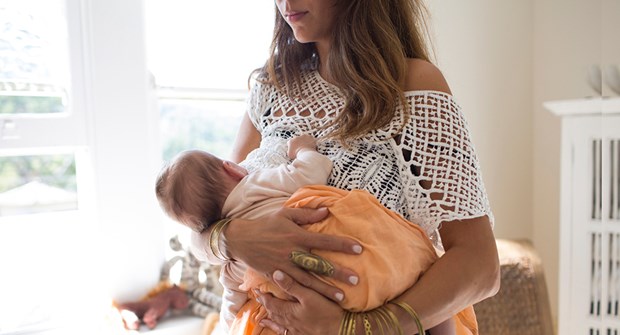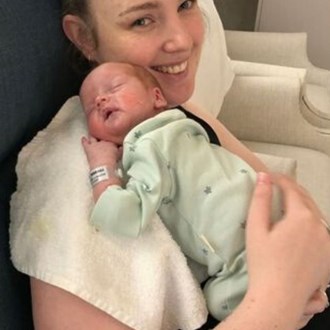7 truths about breastfeeding

A new mum shares the amazing things she has learnt so far
By Practical Parenting
November 24 2016
For something that is so natural, breastfeeding can also create its fair share of challenges.
Philips Avent Ambassador Jane Barry, a registered nurse, midwife and child health nurse, says this is completely normal and with support and guidance, these challenges are usually overcome.
Most importantly, Barry says to “be kind to yourself when you’re getting the hang of breastfeeding, and look to your baby to give you some clues about how it’s done.
“Breastfeeding isn’t just about the mother’s experience but her baby’s as well. They may only be little, but they are also very clever.”
For new mum, Sarah, breastfeeding her newborn has been a rewarding yet challenging experience. "While I hate the soaked-through breast pads, milk-stained shirt and the constant stares from strangers while feeding in public...It's worth it knowing I’m supplying my baby with everything he needs," she said.
Sarah has shared some of the amazing things she's learnt so far about breastfeeding and Jane Barry has weighed in on each one.
7 things I've learnt about breastfeeding
“The colostrum kicks in before your baby is born.”
A woman’s breasts start producing colostrum as early as the 16th week of pregnancy. Quantities vary, some women need to wear a nursing pad to absorb leakage and others aren’t really aware of it until later in their pregnancy. Even a small amount of colostrum is beneficial to a newborn, so don’t be concerned if you don’t seem to be producing much. Colostrum is a powerhouse of nutrients and immune properties and exactly what a newborn baby needs in terms of protection and energy.
“Babies get ‘milk drunk.’”
The term “drunk” is really a misnomer. There is no alcohol in breast milk, unless of course the mother has been drinking alcohol herself. It’s the baby’s appearance of being sleepy and very relaxed after breastfeeding that can cause the comparison with someone being intoxicated.
“Crying makes breasts leak sympathy tears.”
A baby’s crying can cause the mother to “let-down” or for her milk ejection reflex to occur. The hormone oxytocin helps breast milk to flow from the nipples into the baby’s mouth. When a mother hears her own baby cry, or even another baby who may not even be related to her, there can be an automatic let-down reflex and she starts leaking breast milk. Sometimes this is without warning, but it can also be associated with a familiar tingling feeling in the nipples which is a sign of a having a let- down.
“Breasts are like an alarm clock: a mother’s breasts can wake her up to feed before the baby does.”
It’s common for breastfeeding mothers to feel their breasts are full and engorged with milk, especially if it’s been a while since their baby last fed. Even when asleep, a mother’s breasts are producing milk for her baby, it’s a constant process and her breasts are never completely empty. Some women do wake up with the sensation of needing to breastfeed before their baby even rouses but this fullness can happen at any time of the day or night. It’s not just restricted to night times.
“The nipples stretch and have lots of holes for the milk can come out.”
The nipple is made up of different tissue to the breast and is designed to stretch and elongate, this is so the baby can attach more easily to the nipple and suck effectively. The nipple plays a unique role in assisting with milk transfer from a mother’s breast into her baby’s mouth. The number of holes or pores varies between 15-20 on each nipple. At any time, up to 9 of these pores are open or “patent” with milk flowing through them.
“It hurts when your milk comes in.”
Many women feel discomfort when their milk first “comes in”. This generally happens 3-4 days after birth, but can take longer especially if labour or delivery has been complicated or when a mother has had a caesarian section birth. When the breasts fill with milk they can feel heavy, engorged and even painful. Be guided by your midwife about the best way to manage any discomfort. Try to breastfeed your baby as frequently as possible and ask for support to make sure they are attaching correctly and sucking effectively.
“You need to massage lumps out."
Some breastfeeding mothers are prone to developing lumps in their breast tissue. These can be painful, but not always. It can help to gently massage the lumps under a warm shower and encourage the baby to breastfeed more often.
If you notice any redness, swelling, breast tenderness or feel generalised “flu” like symptoms, then see a doctor. These can all be symptoms of mastitis and it’s important to receive professional treatment and advice.






